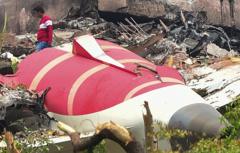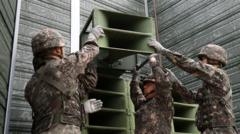New evidence indicates repeated alerts regarding bird strikes at Muan International Airport were overlooked, leading to a catastrophic airline disaster.
**Warnings Ignored: Investigative Insights on the Tragic Jeju Air Crash**

**Warnings Ignored: Investigative Insights on the Tragic Jeju Air Crash**
Examination reveals alarming neglect of bird strike prevention measures ahead of deadly flight incident.
In a deep dive into the circumstances surrounding the devastating Jeju Air Flight 2216 crash in late December 2023, new findings reveal a legacy of ignored warnings and insufficient action regarding bird strikes at Muan International Airport. The incident, which tragically resulted in the loss of 179 lives, raises serious questions about airport safety measures and regulatory adherence.
The latest caution about potential bird strikes surfaced just ten days before the flight accident when a bird strike prevention committee convened to address rising bird-related incidents. The discussions disclosed a critical inadequacy in measures to protect landing aircraft from flocks often seen in the region's coastal habitats. An attendee from one aviation training entity voiced serious concern over the increasing number of strikes, inquiring about the effectiveness of current deterrence tactics.
However, efforts made by airport management regarding bird control were deemed insufficient. An official admitted that their attempts were hampered by limitations in manpower and equipment, alongside ineffective sound deterrents that lacked the reach necessary to dissuade birds from lingering near the airspace.
On December 29, flight 2216, while initiating its descent, succumbed to these very dangers. The pilot's desperate call of “Mayday! Mayday! Mayday!” echoed a chilling reminder of the risks involved, as the aircraft encountered a flock. The plane attempted a hasty maneuver but tragically ended up crashing onto the runway, resulting in an explosive fireball that claimed most onboard.
Investigators continue to scrutinize the complete narrative behind the mishap, probing whether the bird strike was a direct cause or just a contributing factor. Ominously, transportation officials confirmed they identified feathers and blood from the Baikal teal, a migratory duck endemic to Korea's winter skies, in the engines of the ill-fated aircraft. This incident underscores the dire necessity for stringent safety protocols and active intervention strategies to mitigate bird strikes at airports, reflecting a pressing need for systemic overhaul in aviation risk management.
The latest caution about potential bird strikes surfaced just ten days before the flight accident when a bird strike prevention committee convened to address rising bird-related incidents. The discussions disclosed a critical inadequacy in measures to protect landing aircraft from flocks often seen in the region's coastal habitats. An attendee from one aviation training entity voiced serious concern over the increasing number of strikes, inquiring about the effectiveness of current deterrence tactics.
However, efforts made by airport management regarding bird control were deemed insufficient. An official admitted that their attempts were hampered by limitations in manpower and equipment, alongside ineffective sound deterrents that lacked the reach necessary to dissuade birds from lingering near the airspace.
On December 29, flight 2216, while initiating its descent, succumbed to these very dangers. The pilot's desperate call of “Mayday! Mayday! Mayday!” echoed a chilling reminder of the risks involved, as the aircraft encountered a flock. The plane attempted a hasty maneuver but tragically ended up crashing onto the runway, resulting in an explosive fireball that claimed most onboard.
Investigators continue to scrutinize the complete narrative behind the mishap, probing whether the bird strike was a direct cause or just a contributing factor. Ominously, transportation officials confirmed they identified feathers and blood from the Baikal teal, a migratory duck endemic to Korea's winter skies, in the engines of the ill-fated aircraft. This incident underscores the dire necessity for stringent safety protocols and active intervention strategies to mitigate bird strikes at airports, reflecting a pressing need for systemic overhaul in aviation risk management.























